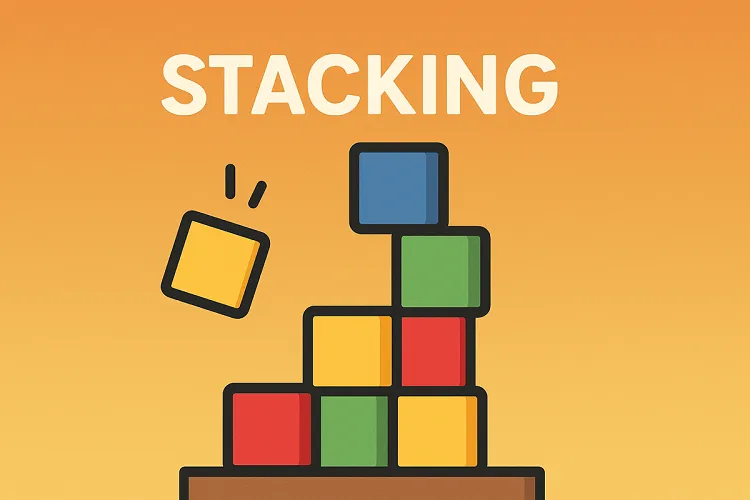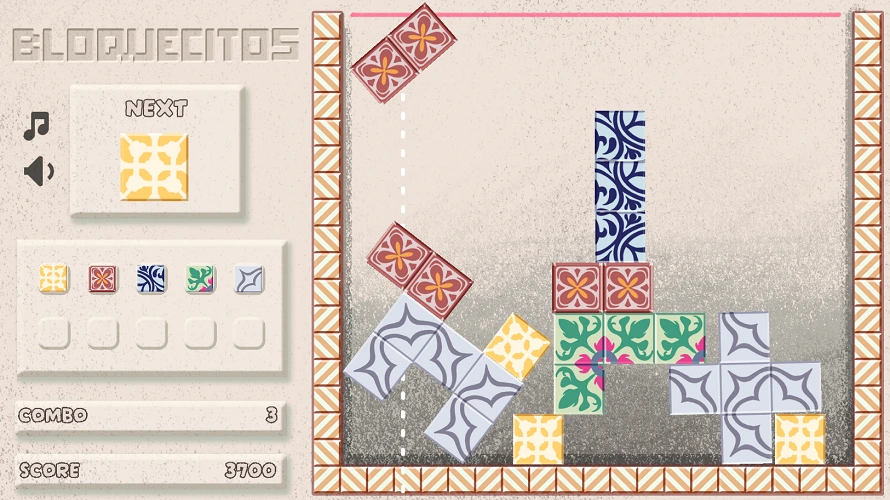Stacking Games
Stacking Puzzle Games — Building Upward Against Gravity

Stacking puzzle games challenge you to build vertically — placing objects on top of each other while fighting gravity, managing balance, and maintaining structural stability. From simple tower construction to complex physics-based challenges, stacking games test your spatial reasoning, precision, and understanding of balance in uniquely engaging ways.
The core appeal lies in defying gravity through careful placement. Each successful addition to your stack feels like a small victory against physical forces trying to topple everything. Build too carelessly and watch your tower collapse spectacularly; stack with precision and achieve impressive heights.
Why Stacking Creates Compelling Puzzles
Tangible Physics — Stacking games use intuitive physics everyone understands from childhood block play. Objects fall, balance matters, center of mass determines stability.
Progressive Difficulty — Early placements are forgiving; each additional level increases challenge as stacks grow taller and more precarious.
Risk-Reward Tension — Should you play safe with centered placements or risk ambitious overhangs for better positioning? Every placement is a calculated gamble.
Visual Feedback — You immediately see whether placements work. Wobbling indicates instability; smooth settling confirms good placement.
Satisfying Achievement — Successfully completing tall, stable stacks delivers genuine accomplishment. You built something through skill and precision.
Types of Stacking Puzzle Games
Tower Building — Classic stacking: place objects (blocks, shapes, items) vertically, creating the tallest or most stable tower possible.
Perfect Placement — Games requiring precise alignment for stacks to succeed, punishing off-center placements with cascading failure.
Physics Stacking — Realistic physics simulation where weight distribution, friction, and momentum affect stability, creating complex balancing challenges.
Shape Stacking — Stack irregular shapes (not just blocks), requiring creative positioning to maintain balance despite awkward geometries.
Strategic Stacking — Puzzle variants where you must stack specific configurations, not just maximum height, requiring planning beyond simple vertical building.
Timed Stacking — Race against time to build stacks, adding pressure to precision challenges.
The Physics of Successful Stacking
Mastering stacking games requires understanding physical principles:
Center of Mass — Stable stacks maintain center of mass above the support base. Off-center weight causes toppling.
Weight Distribution — Heavier objects work better as foundations; lighter items safer at heights where instability matters less.
Surface Area — Larger contact surfaces create more stable connections between stacked elements.
Momentum Management — Dropped or placed objects carry momentum. Skilled players minimize impact forces that destabilize existing stacks.
Friction Utilization — Understanding how surface friction affects sliding and stability helps predict what placements will hold.
Strategic Depth Beyond Simple Stacking
Advanced stacking gameplay involves sophisticated decision-making:
Foundation Planning — Choosing optimal base configurations that allow maximum vertical extension.
Piece Rotation — Finding the best orientation for irregular shapes to maximize stability and create level surfaces for subsequent pieces.
Overhang Calculation — Determining exactly how far pieces can extend beyond lower supports before center of mass shifts fatally.
Sequence Optimization — In puzzle variants, determining which pieces to place in which order for successful completion.
Failure Recovery — Adapting to wobbling stacks, adjusting plans when placements don't settle as expected.
The Satisfaction of Stable Towers
Few puzzle moments match the satisfaction of placing a final piece atop a tall, precarious stack and watching it settle into perfect stability. You've defeated gravity, managed complex physics, and demonstrated precision under pressure.
This satisfaction amplifies when:
- Stacks survive despite looking impossibly balanced
- You successfully place pieces others would consider too risky
- Tall towers stand firm where one wrong placement would collapse everything
- You achieve goals with minimal pieces through optimal placement
Educational Value
Stacking games teach genuine physics and engineering concepts:
Structural Stability — Learning what makes structures stable versus prone to collapse Balance Points — Developing intuition for center of mass and balance Force Distribution — Understanding how weight spreads through stacked structures Material Properties — Seeing how different shapes and weights stack differently Engineering Thinking — Approaching building challenges with planning and analysis
Perfect for All Ages
Stacking games appeal universally:
Young Children — Develops spatial awareness and motor skills through simple stacking Students — Reinforces physics concepts through playful experimentation Adults — Provides satisfying challenges requiring precision and strategy Seniors — Maintains spatial reasoning and fine motor coordination
Stress Relief Through Building
Stacking puzzles offer therapeutic benefits:
- Focused concentration that crowds out worries
- Meditative rhythm of careful placement
- Immediate feedback creating clear goals and achievement
- Constructive activity building rather than destroying
- Flow states through repeated challenge and mastery
The Thrill of Collapse
Paradoxically, spectacular failures contribute to stacking game appeal. When physics-based stacks collapse, they fall realistically — pieces tumbling, bouncing, and scattering. These failures are:
- Visually entertaining despite representing failure
- Educational showing exactly why placements didn't work
- Low-consequence easy to restart and try again
- Motivating creating "so close!" moments that inspire retry
Mobile Gaming Perfect Match
Stacking mechanics work beautifully on touchscreens:
- Tap or drag to position pieces
- Intuitive rotation through swipe gestures
- Visual clarity of placement and balance
- Quick sessions perfect for mobile play
- No complex controls beyond basic positioning
Competitive and Cooperative Modes
Stacking games support various social dynamics:
Personal Challenge — Beat your own high scores and height records Competitive Play — Who builds the tallest tower with limited pieces? Cooperative Building — Work together to achieve ambitious stacks Speedrunning — Race to complete stacking challenges in minimum time Creative Building — Artistic tower creation beyond pure optimization
Discover Stacking Puzzle Games
Explore our collection of stacking puzzle games and test your balance, precision, and physics understanding. Whether you're building simple towers, managing complex physics-based challenges, stacking irregular shapes, racing against time, or creating strategic configurations, these games prove that defying gravity through careful placement never gets old.
Place, balance, build, and reach for the sky. That's the enduring appeal of stacking puzzle games — where vertical ambition meets horizontal stability, and victory means standing tall against gravity's constant pull.


